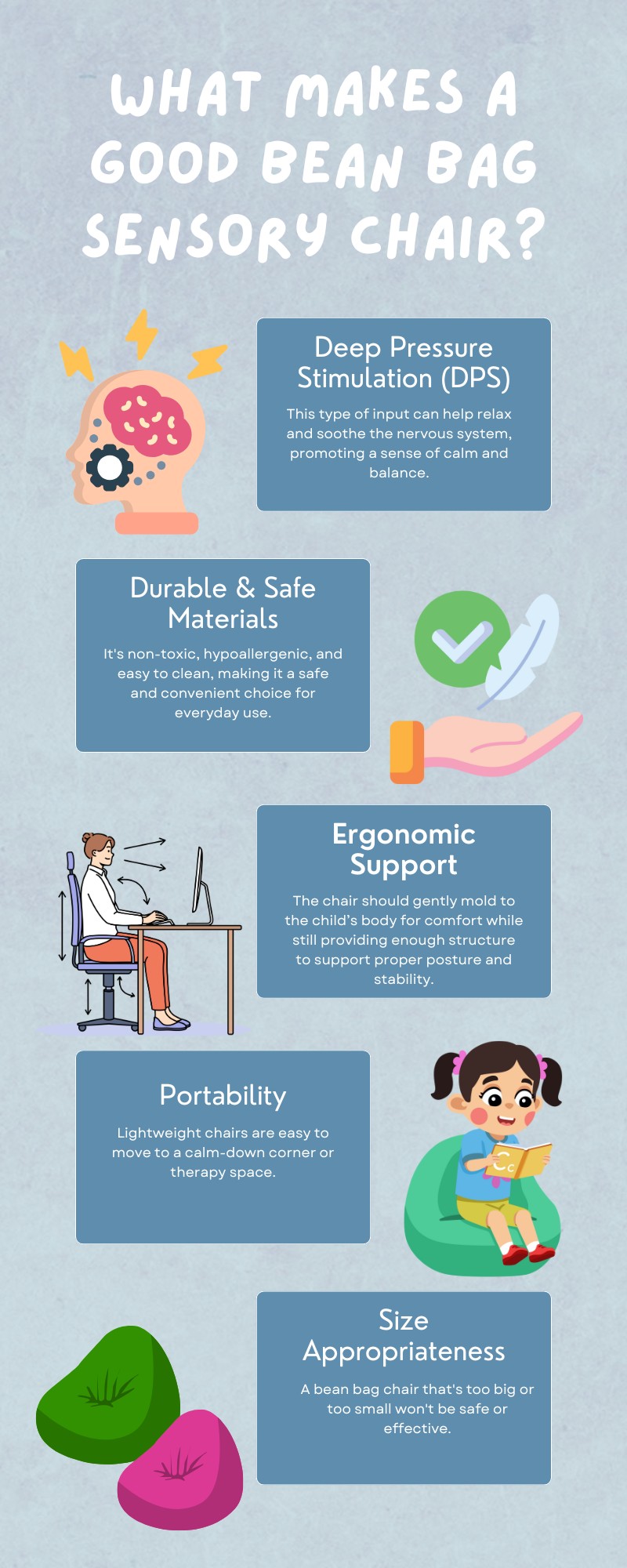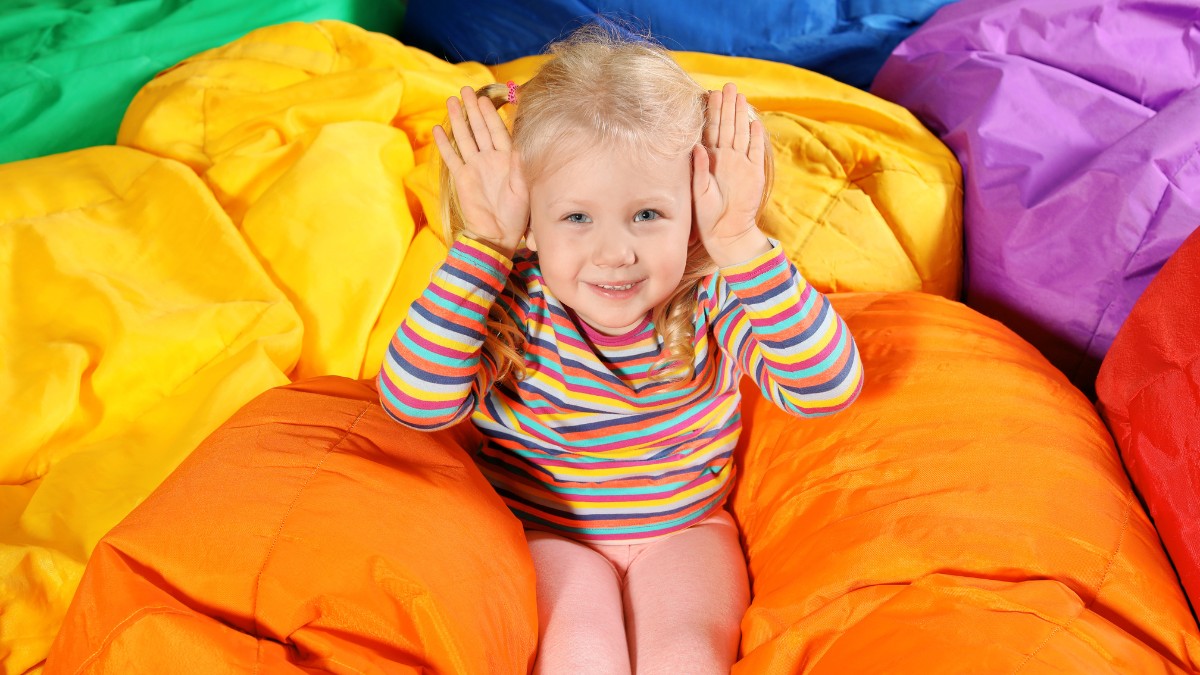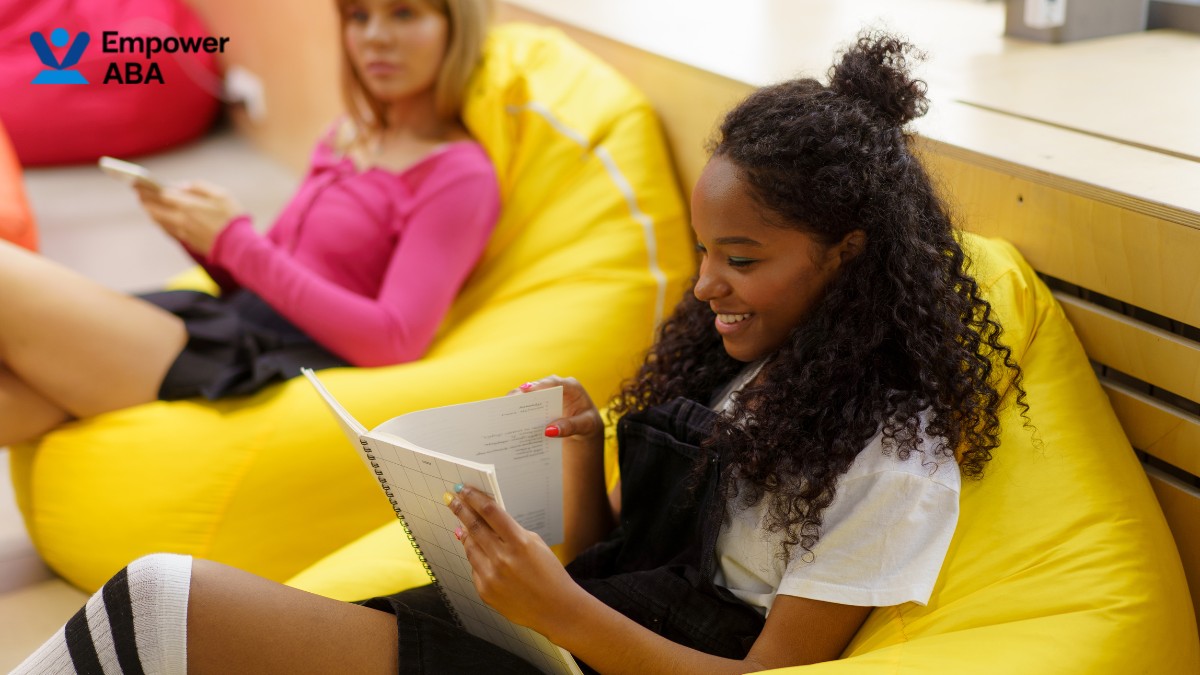Key Points:
- Sensory bean bag chairs help regulate sensory input and support calm behavior in children with autism.
- The best chairs offer deep pressure stimulation, ergonomic support, and safe materials.
- Choosing the right size, shape, and material can make a significant difference in comfort and sensory regulation.
Parents know that comfort isn’t just physical—it’s emotional. For children with autism, environments matter. Sensory overload can turn peaceful moments into stress. A supportive bean bag chair for sensory needs can offer relief. It’s more than a seat—it’s a strategy that helps your child feel grounded, calm, and understood.
Why Sensory Seating Matters for Kids with Autism
Many children with autism experience sensory processing challenges, which can make everyday environments feel overwhelming. A bean bag sensory chair can become more than just a cozy spot—it can be a critical part of a sensory-friendly home or classroom.
These chairs provide proprioceptive input—pressure and body awareness—that helps kids self-regulate. The softness and shape help them feel grounded, especially when the world around them feels chaotic. Sensory chairs don’t just offer comfort; they offer relief.
What Makes a Good Bean Bag Sensory Chair?
When shopping for a sensory bean bag chair, the choices can feel endless. However, not all are created equal—especially for kids with autism. Before diving into specific products, it’s important to understand what features truly make a difference.
Here are the essential features to consider:

Best Bean Bag Chairs for Autism and Sensory Support
Every child is different, so what works for one may not work for another. Still, there are a few standout sensory chairs that are consistently recommended by parents, therapists, and educators.
1. Yogibo Max Bean Bag
The Yogibo Max is a favorite for sensory seekers. It’s not just a bean bag—it’s a body-conforming lounger that offers full-body pressure and adapts to every movement. The stretchy cotton-spandex blend cover provides gentle tactile input, and it’s machine-washable.
Pros:
- Conforms completely to the body
- Washable cover
- Lightweight and versatile
Cons:
- Pricier than some alternatives
- Filler may need occasional fluffing
2. Moon Pod
The Moon Pod looks more like a tech gadget than a bean bag, but it serves a real sensory purpose. It simulates zero-gravity floating, reducing pressure on joints while calming the nervous system. It’s particularly great for older children or teens with autism.
Pros:
- Provides weightless, floating sensation
- Compact design
- Stylish enough for shared spaces
Cons:
- Less “hugging” feel than traditional bean bags
- Not ideal for younger kids
3. Posh Creations Structured Comfy Chair
This bean bag chair offers a hybrid design: structured back support with the softness of a bean bag. Kids who need both sensory input and posture support tend to love this chair, especially for reading or winding down.
Pros:
- Offers back support
- Great for sitting upright
- Budget-friendly
Cons:
- Not ideal for full-body lounging
- Fabric isn’t as stretchy as others
4. Big Joe Milano Bean Bag Chair
Big Joe’s Milano design is another great option for children who benefit from light compression and gentle tactile stimulation. It’s filled with UltimaX beans that conform to the body while retaining shape longer than traditional fillers.
Pros:
- Armrests for added comfort
- Refillable bean system
- Structured yet soft
Cons:
- Smaller than other options
- May not provide deep pressure for some kids
How to Choose the Right Bean Bag Chair for Your Child
Choosing the right bean bag sensory chair involves more than just picking a color or size. You want something that fits your child’s sensory profile, supports their specific needs, and aligns with your home or therapy environment.
- Sensory Preferences: Some children prefer firm pressure, while others want a soft, enveloping experience. Think about whether your child enjoys tight hugs (seekers of deep pressure) or tends to avoid certain textures (sensitive to touch).
- Age and Size: Make sure the chair is appropriately sized. A chair that’s too large can be overwhelming or unsafe for younger children, while something too small won’t offer enough support or comfort.
- Safety Features: Look for double-stitched seams, child-proof zippers, and materials that are flame-retardant and non-toxic.
- Cleaning and Maintenance: Spills happen. Make sure the cover is removable and washable. Some bean bag chairs even offer waterproof linings.
- Versatility: Can the chair be moved easily? Is it suitable for use in a sensory room, bedroom, or classroom?
What’s the Best Place to Use a Bean Bag Sensory Chair?
The flexibility of a sensory bean bag chair means you can use it in various parts of your home or therapy center. But optimal placement can elevate its effectiveness.
Suggested spaces:
- Calm-down corners in classrooms or homes
- Reading nooks for quiet sensory breaks
- Therapy rooms for ABA or occupational therapy
- Bedrooms for bedtime transitions and winding down
- Living areas for inclusion during family time without overstimulation
Each of these spaces provides a different function, but all serve the common purpose of sensory regulation.
Support Beyond the Chair: ABA Therapy with Empower ABA
If you’re exploring sensory supports like bean bag sensory chairs, you’re already prioritizing your child’s unique needs. Pairing physical comfort tools with evidence-based therapy can make a world of difference.
Empower ABA provides Applied Behavior Analysis (ABA) therapy in New York, New Jersey, and Virginia to help children with autism develop essential life skills, improve communication, and reduce challenging behaviors. Whether your child is working on regulation, independence, or social interactions, our team is here to support your journey.
Contact us today to learn how we can help your child thrive.


